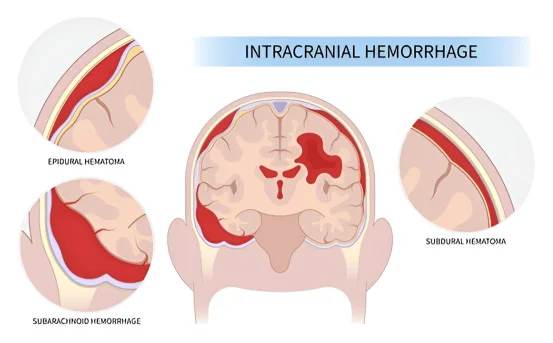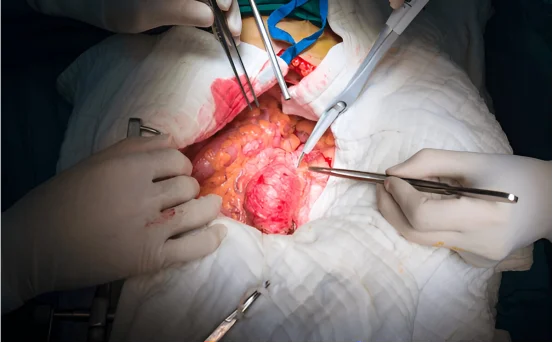Introduction
An arrhythmia is a condition in which the heart beats irregularly either too fast, too slow, or unpredictably. While many arrhythmias are harmless and require only monitoring or medication, others can be serious and lead to complications such as stroke, heart failure, or sudden cardiac death. For some patients, medications and non-invasive treatments like electrical cardioversion or catheter ablation are effective. However, when these methods fail or the arrhythmia is life-threatening, surgery becomes a necessary intervention.
Surgical treatment for arrhythmia focuses on correcting the structural or electrical pathways in the heart that are causing the abnormal rhythms. These procedures are often reserved for patients with severe or refractory arrhythmias, especially when associated with other cardiac conditions. Technological advancements in cardiac surgery have significantly improved outcomes, as there are different types of arrhythmia surgery.
Types of Arrhythmia Surgery
- Maze Procedure (Cox-Maze Surgery)
The Maze procedure is one of the most well-established surgical treatments for atrial fibrillation (AF), the most common type of serious arrhythmia. It involves creating a series of precise incisions or ablation lines in the atria of the heart, forming a pattern that resembles a maze. These lines form scar tissue that disrupts the electrical impulses causing the irregular heartbeat, forcing them to follow a controlled path. The original version of the Maze procedure used surgical incisions, but modern techniques often use cryotherapy (freezing) or radiofrequency energy instead. Maze surgery is often performed during open-heart procedures, such as valve repair or coronary artery bypass grafting, but it can also be done as a standalone surgery. It is particularly useful for patients with persistent or longstanding atrial fibrillation who have not responded to medications or catheter ablation. - Mini-Maze Procedure
The Mini-Maze is a less invasive version of the traditional Maze procedure. Instead of requiring full open-heart surgery, the Mini-Maze uses small incisions between the ribs to access the heart with specialized tools. Surgeons typically use radiofrequency or cryoablation to create scar lines that block abnormal electrical signals. It is most often recommended for patients with paroxysmal or persistent atrial fibrillation who are at high risk for stroke or have symptoms that are not controlled with medication. The Mini-Maze can be performed on a beating heart and may be combined with left atrial appendage removal to reduce stroke risk. This approach offers faster recovery times, reduced pain, and fewer complications compared to traditional Maze surgery. - Pulmonary Vein Isolation Surgery
This surgical approach is aimed specifically at atrial fibrillation that originates in the pulmonary veins, which carry blood from the lungs to the heart. In many cases of AF, rogue electrical signals start in the tissue surrounding the openings of these veins. During pulmonary vein isolation, the surgeon either removes or ablates the tissue that connects the pulmonary veins to the left atrium, thereby isolating the abnormal signals and preventing them from disrupting the heart’s rhythm. This procedure is often performed as part of the Maze or Mini-Maze technique, but it can also be done surgically in patients who are not good candidates for catheter-based ablation or have had unsuccessful prior attempts. - AV Node Ablation with Pacemaker Implantation
In patients with uncontrolled atrial fibrillation, especially when rapid heart rates cause symptoms or contribute to heart failure, one option is AV (atrioventricular) node ablation. The AV node acts as the electrical bridge between the atria and ventricles. In this procedure, the AV node is intentionally destroyed to stop abnormal electrical impulses from passing to the ventricles. Because this disrupts normal conduction, a permanent pacemaker must be implanted immediately to maintain a consistent heart rate. Although this method doesn’t cure the arrhythmia, it relieves symptoms and protects the lower chambers from being driven too fast. It is generally used for older patients or those who have not responded to other therapies. - Surgical Implantation of Cardiac Devices
Certain arrhythmias, especially those that cause the heart to beat too slowly (brady arrhythmias), or those associated with a high risk of sudden cardiac arrest, require implantation of specialized cardiac devices. The two most common types are pacemakers and implantable cardioverter defibrillators (ICDs). Pacemakers are surgically implanted under the skin, typically near the collarbone, and connected to the heart through wires (leads). They monitor the heart’s rhythm and deliver small electrical impulses to stimulate heartbeats when necessary. Pacemaker surgery is minimally invasive and usually performed under local anesthesia with sedation. - Hybrid Surgical and Catheter Ablation (Hybrid Approach)
For some patients with persistent or complex atrial fibrillation, neither catheter ablation nor surgery alone is sufficient. In these cases, a hybrid approach may be used, combining surgical and catheter techniques. Surgeons create epicardial ablation lines on the surface of the heart through small incisions, while electrophysiologists perform endocardial ablation from inside the heart using catheters. This dual strategy ensures more complete electrical isolation of arrhythmogenic areas and improves the chances of long-term rhythm control. Hybrid procedures are typically performed in specialized centers with expertise in both surgical and electrophysiological techniques. - Left Atrial Appendage (LAA) Closure
Although not technically a rhythm-correcting procedure, surgical closure or removal of the left atrial appendage is often performed in patients with atrial fibrillation to reduce the risk of stroke. The LAA is a small pouch in the left atrium where blood can pool and form clots, especially in patients with irregular heartbeats. Surgical LAA closure may be performed during arrhythmia surgery, valve surgery, or as a standalone procedure in patients who cannot tolerate blood thinners. This step is particularly important for patients with a high risk of stroke but who are not eligible for long-term anticoagulation therapy. - Surgical Treatment of Ventricular Tachycardia
Ventricular tachycardia (VT) is a life-threatening arrhythmia that originates in the heart’s lower chambers. While catheter ablation is often the first-line treatment, surgical ablation may be needed for cases of refractory VT that do not respond to catheter-based techniques. During this surgery, the area of scar tissue or abnormal conduction responsible for the arrhythmia is identified and destroyed using surgical instruments. This type of procedure is usually reserved for patients who are already undergoing open-heart surgery for another reason, such as coronary bypass or aneurysm repair.
Conclusion
Surgical treatment for arrhythmias has come a long way and offers hope to patients who do not respond to medications or catheter-based interventions. From traditional open-heart procedures like the Maze surgery to less invasive techniques such as the Mini-Maze, as well as the implantation of lifesaving devices like pacemakers and ICDs, modern arrhythmia surgery is both safe and effective for a range of patients.
The type of arrhythmia surgery , its origin within the heart, the patient’s overall health, and the presence of coexisting cardiac conditions all influence the choice of surgical treatment. Some surgeries aim to cure the arrhythmia by targeting its source, while others help manage symptoms or prevent serious complications such as stroke or sudden death.
As surgical methods and technologies continue to advance, arrhythmia surgery is becoming more personalized, minimally invasive, and precise. With the guidance of experienced cardiologists, electrophysiologists, and cardiac surgeons, patients today can benefit from a comprehensive approach that restores rhythm, protects heart function, and significantly improves quality of life.























